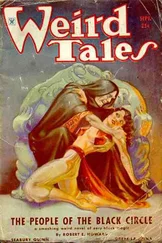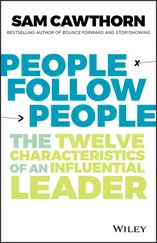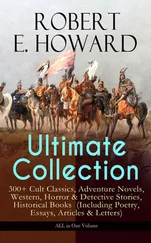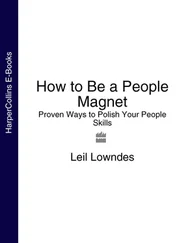Howard Zinn - A People
Здесь есть возможность читать онлайн «Howard Zinn - A People» весь текст электронной книги совершенно бесплатно (целиком полную версию без сокращений). В некоторых случаях можно слушать аудио, скачать через торрент в формате fb2 и присутствует краткое содержание. Издательство: Harper-Collins, Жанр: Фэнтези, на английском языке. Описание произведения, (предисловие) а так же отзывы посетителей доступны на портале библиотеки ЛибКат.
- Название:A People
- Автор:
- Издательство:Harper-Collins
- Жанр:
- Год:неизвестен
- ISBN:нет данных
- Рейтинг книги:4 / 5. Голосов: 1
-
Избранное:Добавить в избранное
- Отзывы:
-
Ваша оценка:
- 80
- 1
- 2
- 3
- 4
- 5
A People: краткое содержание, описание и аннотация
Предлагаем к чтению аннотацию, описание, краткое содержание или предисловие (зависит от того, что написал сам автор книги «A People»). Если вы не нашли необходимую информацию о книге — напишите в комментариях, мы постараемся отыскать её.
A People — читать онлайн бесплатно полную книгу (весь текст) целиком
Ниже представлен текст книги, разбитый по страницам. Система сохранения места последней прочитанной страницы, позволяет с удобством читать онлайн бесплатно книгу «A People», без необходимости каждый раз заново искать на чём Вы остановились. Поставьте закладку, и сможете в любой момент перейти на страницу, на которой закончили чтение.
Интервал:
Закладка:
Slavery existed in the African states, and it was sometimes used by Europeans to justify their own slave trade. But, as Davidson points out, the «slaves» of Africa were more like the serfs of Europe — in other words, like most of the population of Europe. It was a harsh servitude, but they had rights which slaves brought to America did not have, and they were "altogether different from the human cattle of the slave ships and the American plantations." In the Ashanti Kingdom of West Africa, one observer noted that "a slave might marry; own property; himself own a slave; swear an oath; be a competent witness and ultimately become heir to his master… An Ashanti slave, nine cases out of ten, possibly became an adopted member of the family, and in time his descendants so merged and intermarried with the owner's kinsmen that only a few would know their origin."
One slave trader, John Newton (who later became an antislavery leader), wrote about the people of what is now Sierra Leone:
The state of slavery, among these wild barbarous people, as we esteem them, is much milder than in our colonies. For as, on the one hand, they have no land in high cultivation, like our West India plantations, and therefore no call for that excessive, unintermitted labour, which exhausts our slaves: so, on the other hand, no man is permitted to draw blood even from a slave.
African slavery is hardly to be praised. But it was far different from plantation or mining slavery in the Americas, which was lifelong, morally crippling, destructive of family ties, without hope of any future. African slavery lacked two elements that made American slavery the most cruel form of slavery in history: the frenzy for limitless profit that comes from capitalistic agriculture; the reduction of the slave to less than human status by the use of racial hatred, with that relentless clarity based on color, where white was master, black was slave.
In fact, it was because they came from a settled culture, of tribal customs and family ties, of communal life and traditional ritual, that African blacks found themselves especially helpless when removed from this. They were captured in the interior (frequently by blacks caught up in the slave trade themselves), sold on the coast, then shoved into pens with blacks of other tribes, often speaking different languages.
The conditions of capture and sale were crushing affirmations to the black African of his helplessness in the face of superior force. The marches to the coast, sometimes for 1,000 miles, with people shackled around the neck, under whip and gun, were death marches, in which two of every five blacks died. On the coast, they were kept in cages until they were picked and sold. One John Barbot, at the end of the seventeenth century, described these cages on the Gold Coast:
As the slaves come down to Fida from the inland country, they are put into a booth or prison… near the beach, and when the Europeans are to receive them, they are brought out onto a large plain, where the ship's surgeons examine every part of everyone of them, to the smallest member, men and women being stark naked… Such as are allowed good and sound are set on one side… marked on the breast with a red- hot iron, imprinting the mark of the French, English or Dutch companies… The branded slaves after this are returned to their former booths where they await shipment, sometimes 10–15 days…
Then they were packed aboard the slave ships, in spaces not much bigger than coffins, chained together in the dark, wet slime of the ship's bottom, choking in the stench of their own excrement. Documents of the time describe the conditions:
The height, sometimes, between decks, was only eighteen inches; so that the unfortunate human beings could not turn around, or even on their sides, the elevation being less than the breadth of their shoulders; and here they are usually chained to the decks by the neck and legs. In such a place the sense of misery and suffocation is so great, that the Negroes… are driven to frenzy.
On one occasion, hearing a great noise from belowdecks where the blacks were chained together, the sailors opened the hatches and found the slaves in different stages of suffocation, many dead, some having killed others in desperate attempts to breathe. Slaves often jumped overboard to drown rather than continue their suffering. To one observer a slave-deck was "so covered with blood and mucus that it resembled a slaughter house."
Under these conditions, perhaps one of every three blacks transported overseas died, but the huge profits (often double the investment on one trip) made it worthwhile for the slave trader, and so the blacks were packed into the holds like fish.
First the Dutch, then the English, dominated the slave trade. (By 1795 Liverpool had more than a hundred ships carrying slaves and accounted for half of all the European slave trade.) Some Americans in New England entered the business, and in 1637 the first American slave ship, the Desire , sailed from Marblehead. Its holds were partitioned into racks, 2 feet by 6 feet, with leg irons and bars.
By 1800, 10 to 15 million blacks had been transported as slaves to the Americas, representing perhaps one-third of those originally seized in Africa. It is roughly estimated that Africa lost 50 million human beings to death and slavery in those centuries we call the beginnings of modern Western civilization, at the hands of slave traders and plantation owners in Western Europe and America, the countries deemed the most advanced in the world.
In the year 1610, a Catholic priest in the Americas named Father Sandoval wrote back to a church functionary in Europe to ask if the capture, transport, and enslavement of African blacks was legal by church doctrine. A letter dated March 12, 1610, from Brother Luis Brandaon to Father Sandoval gives the answer:
Your Reverence writes me that you would like to know whether the Negroes who are sent to your parts have been legally captured. To this I reply that I think your Reverence should have no scruples on this point, because this is a matter which has been questioned by the Board of Conscience in Lisbon, and all its members are learned and conscientious men. Nor did the bishops who were in SaoThome, Cape Verde, and here in Loando-all learned and virtuous men-find fault with it. We have been here ourselves for forty years and there have been among us very learned Fathers… never did they consider the trade as illicit. Therefore we and the Fathers of Brazil buy these slaves for our service without any scruple…
With all of this-the desperation of the Jamestown settlers for labor, the impossibility of using Indians and the difficulty of using whites, the availability of blacks offered in greater and greater numbers by profit-seeking dealers in human flesh, and with such blacks possible to control because they had just gone through an ordeal which if it did not kill them must have left them in a state of psychic and physical helplessness-is it any wonder that such blacks were ripe for enslavement?
And under these conditions, even if some blacks might have been considered servants, would blacks be treated the same as white servants?
The evidence, from the court records of colonial Virginia, shows that in 1630 a white man named Hugh Davis was ordered "to be soundly whipt… for abusing himself… by defiling his body in lying with a Negro." Ten years later, six servants and "a negro of Mr. Reynolds" started to run away. While the whites received lighter sentences, "Emanuel the Negro to receive thirty stripes and to be burnt in the cheek with the letter R, and to work in shackle one year or more as his master shall see cause."
Although slavery was not yet regularized or legalized in those first years, the lists of servants show blacks listed separately. A law passed in 1639 decreed that "all persons except Negroes" were to get arms and ammunition-probably to fight off Indians. When in 1640 three servants tried to run away, the two whites were punished with a lengthening of their service. But, as the court put it, "the third being a negro named John Punch shall serve his master or his assigns for the time of his natural life." Also in 1640, we have the case of a Negro woman servant who begot a child by Robert Sweat, a white man. The court ruled "that the said negro woman shall be whipt at the whipping post and the said Sweat shall tomorrow in the forenoon do public penance for his offense at James citychurch…"
Читать дальшеИнтервал:
Закладка:
Похожие книги на «A People»
Представляем Вашему вниманию похожие книги на «A People» списком для выбора. Мы отобрали схожую по названию и смыслу литературу в надежде предоставить читателям больше вариантов отыскать новые, интересные, ещё непрочитанные произведения.
Обсуждение, отзывы о книге «A People» и просто собственные мнения читателей. Оставьте ваши комментарии, напишите, что Вы думаете о произведении, его смысле или главных героях. Укажите что конкретно понравилось, а что нет, и почему Вы так считаете.












